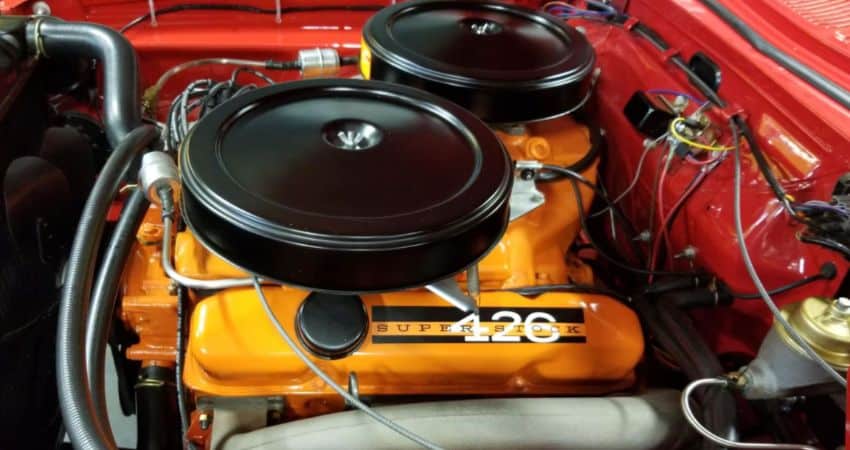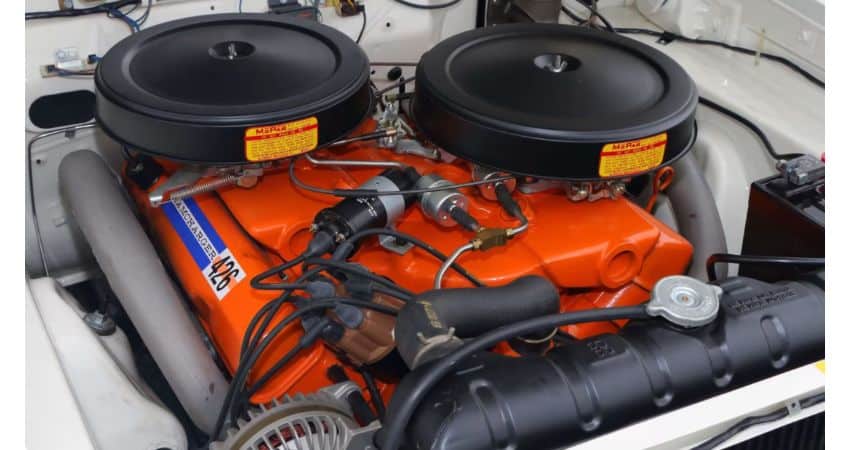426 Max Wedge Engine Compression Ratios
The 426 Maximum Performance Wedge Engine (nicknamed Max Wedge) was produced in 1963 and 1964. Three different compression ratios were used.
The 426 Max Wedge engine has the following compression ratios from the factory:
- 11.0:1 Compression Ratio (1963-1964)
- 13.5:1 Compression Ratio (1963)
- 12.5:1 Compression Ratio (1964)
| Year | 426 Max Wedge Compression Ratio (Dodge) | 426 Max Wedge Compression Ratio (Plymouth) |
| 1963 | Ramcharger 426/Ramcharger 426 ll 11.0:1 or 13.5:1 Compression Ratios | Super Stock 426/Super Stock 426 ll 11.0:1 or 13.5:1 Compression Ratios |
| 1964 | Ramcharger 426 lll 11.0:1 or 12.5:1 Compression Ratios | Super Stock 426 lll 11.0:1 or 12.5:1 Compression Ratios |
Plymouth and Dodge had different names for the Max Wedge engines. Plymouth called it Super Stock 426 and Dodge called it Ramcharger 426.
Except for their labels, both versions were the same engine with the same compression ratios and specifications.

426 Max Wedge Compression Ratios
The standard compression ratio was the 11.0:1 and the 13.5:1 or 12.5:1 ratios were optional.
The higher compression ratio produced more horsepower and torque. It increased both power ratings by ten each.
For all three ratios, the Chrysler engineers recommended a high-octane gasoline which wasn’t available in the corner gas stations. The main purpose of the engine was for racing and not for street use.

If you have any questions about the 426 Max Wedge, send us an email found specifically on our contact page.
My first experience with Mopar engines, including the 426 Max Wedge, was 38 years ago. It was when I assembled my first Mopar engine.
More Max Wedge Engine Articles
426 Max Wedge Camshaft Specifications
426 Max Wedge Horsepower and Torque
Article Resources
- Dodge and Plymouth Engine Service Manuals
- Chrysler Service Bulletins (1962-1964)
- Dodge and Plymouth Data Books (1962-1964)
- Google Books: Chrysler Engines 1922-1998
